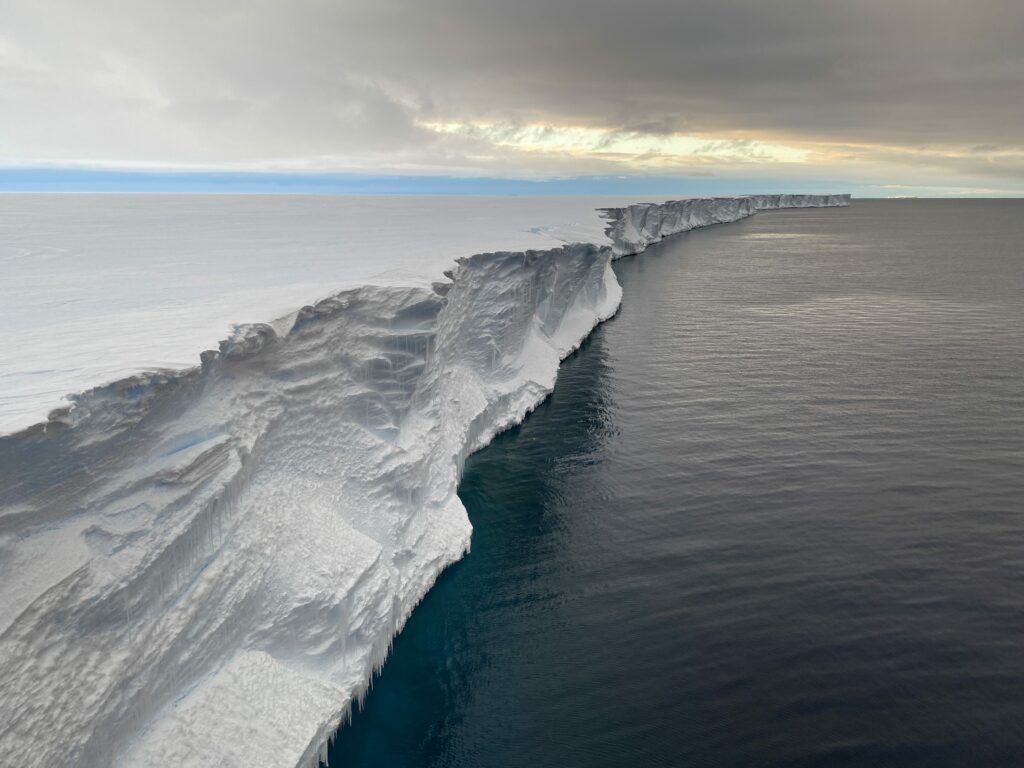On the edge: warming waters destabilising ‘cold’ ice shelf

Researchers have found large-scale anomalies in wind and sea ice are causing the waters below an East Antarctic ice shelf to warm, which could affect future sea level rise across the world.
Dr Matthis Auger is a co-author of the new study published in Nature Geoscience, led by Julius Lauber from the Norwegian Polar Institute.
“We found a shift to higher water temperatures beneath Fimbulisen Ice Shelf in East Antarctica in 2016,” said Dr Auger, who is based at the ARC Australian Centre for Excellence in Antarctic Science (ACEAS) and the Institute for Marine and Antarctic Studies (IMAS) at the University of Tasmania.
Until now, scientists thought the East Antarctic region was kept relatively stable compared to other Antarctic regions, because of the cold-water masses residing within its ice shelf cavities, which limit melting.
“Instead, we found the warming waters led to an increase in the melting of the ice shelf and the loss of glacier mass,” Dr Auger said.
Ice shelves are the floating extensions of ice sheets, and are the ends of glaciers that float on the ocean. If they melt more than normal, the ice upstream flows more quickly into the ocean, raising sea levels.
The Antarctic ice sheet holds enough freshwater to raise global sea level by up to 58 metres.
“In West Antarctica, the presence of warm water under the ice shelves has been documented for decades,” Dr Auger said. “And they have accelerated the melt of that glacier.”
“We thought East Antarctica was kept relatively ‘safe’. However, this new study shows that warmer waters have started getting into the ice shelf—causing more melting than we thought.”
Understanding how climate change influences the melting of glaciers is one of the greatest challenges in predicting future sea-level rise. The researchers found the waters below the East Antarctic are warming because of simultaneous climate-driven events: a reduction in coastal sea ice cover and a strengthening of the subpolar winds, which brings warmer water closer to the coast.
The study includes nine years of continuous measurements from moorings placed in the ocean beneath the Fimbulisen Ice Shelf. It also incorporates data on regional and circum-Antarctic oceanic and atmospheric conditions.
As Antarctic sea ice dropped to a record low for the second year running in 2023, and climate projections reveal a further acceleration of westerly winds, the inflow of warmer waters below East Antarctic ice shelves could increase in the future.
“Further melting of the East Antarctic ice shelves is a concern,” Dr Auger said. “This region of Antarctica is traditionally considered ‘cold’, unlike West Antarctica—where most of Antarctica’s mass loss occurs today.”“We are only just beginning to understand understand the critical significance of climate related changes in this part of the world —and it is crucial this research continues, so we can better predict and prepare for future ice sheet stability and global sea level rise.”
PAPER
Julius Lauber, Tore Hattermann, Laura de Steur, Elin Darelius, Matthis Auger, Ole Anders Nøst & Geir Moholdt. (2023). ‘Warming beneath an East Antarctic ice shelf due to increased subpolar westerlies and reduced sea ice’. Nature Geoscience. DOI: 10.1038/s41561-023-01273-5


